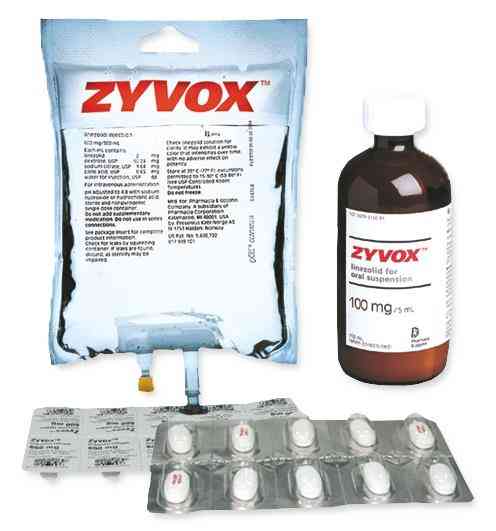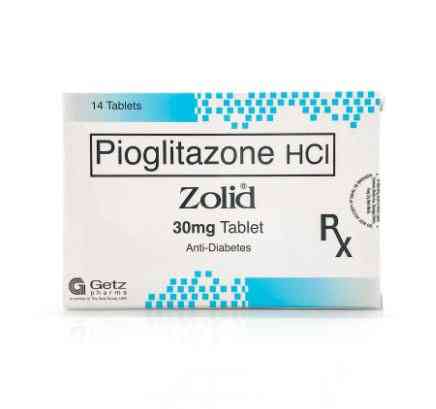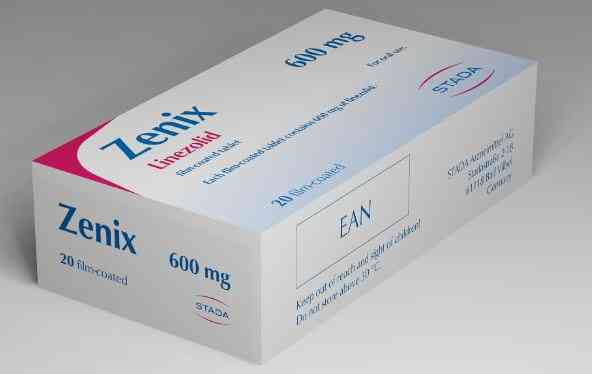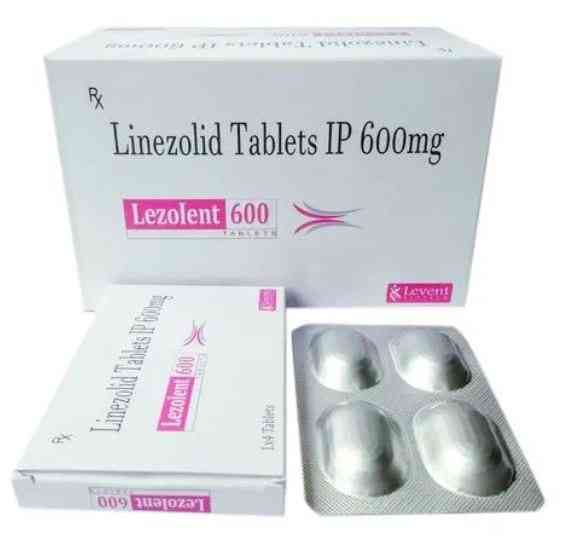Mechanism of Action of Zenix in the Treatment of Bacterial Infections
Zenix is a medication that contains linezolid as an active substance. Linezolid is an oxazolidinone antibiotic that works by inhibiting bacterial protein synthesis. This action prevents the bacteria from growing and spreading, thereby controlling the infection.
Linezolid binds to a specific site on the bacterial ribosome, which is responsible for protein synthesis. This binding prevents the formation of the functional ribosome, thus inhibiting the translation of the mRNA into protein. This inhibition of protein synthesis ultimately leads to bacterial cell death.
Zenix is effective against a wide range of Gram-positive bacteria, including some strains that are resistant to other antibiotics. Zenix can be used to treat skin infections, pneumonia, and infections caused by MRSA. MRSA is a type of bacteria that is resistant to many antibiotics and can cause serious infections. Zenix is effective against MRSA, making it a valuable medication in the treatment of this condition.
Zenix Dosage and Administration Guidelines
The recommended dosage of Zenix for most infections is 600mg twice daily, administered orally or intravenously. The dosage may vary depending on the severity of the infection, the patients age, weight, and medical history.
Zenix tablets should be taken with or without food. If Zenix is being administered intravenously, it should be infused over a period of 30-120 minutes.
It is important to complete the full course of treatment as prescribed by the doctor, even if the symptoms improve. Failure to complete the full course of treatment can lead to a recurrence of the infection or the development of antibiotic resistance.
Zenix Drug Interactions
Before taking Zenix, patients should inform their doctor or pharmacist about any other medications they are taking. Zenix can interact with certain medications, including MAOIs and certain antidepressants. The use of Zenix with these medications can cause serotonin syndrome, a potentially life-threatening condition.
Zenix can also interact with medications that lower blood pressure, such as antihypertensive medications. The use of Zenix with these medications can cause a drop in blood pressure, which can lead to dizziness or fainting.
Patients should also inform their doctor or pharmacist about any herbal supplements or over-the-counter medications they are taking, as these can also interact with Zenix.
The Safety Profile of Zenix
Like all medications, Zenix can cause side effects. The most common side effects of Zenix include nausea, vomiting, diarrhea, and headache. These side effects are generally mild and go away on their own.
Less common but more serious side effects of Zenix include low platelet count, which can cause bleeding or bruising, and low white blood cell count, which can increase the risk of infections. These side effects are rare but can be serious. If the patient experiences any of these side effects, they should contact their doctor immediately.
Zenix can also cause a serious condition called serotonin syndrome when used with certain medications. Symptoms of serotonin syndrome include agitation, confusion, rapid heart rate, high blood pressure, muscle rigidity, and sweating. Patients should seek immediate medical attention if they experience any of these symptoms.
Zenix Contraindications and Precautions
Before prescribing Zenix, doctors should also consider the patients medical history and any underlying medical conditions. Zenix should be used with caution in patients with liver or kidney disease, as the medication is metabolized and excreted through these organs. It should also be used with caution in patients with high blood pressure, heart disease, and thyroid problems.
Patients who are pregnant or breastfeeding should consult their doctor before taking Zenix. The safety of the medication during pregnancy and breastfeeding has not been established, and the potential risks and benefits should be carefully considered before use.
Clinical Studies and Real-World Evidence of Zenix Efficacy and Safety
The efficacy and safety of Zenix have been demonstrated in multiple clinical studies. In a randomized, double-blind study, Zenix was found to be as effective as vancomycin, another commonly used antibiotic, in the treatment of skin infections caused by MRSA.
In another study, Zenix was found to be effective in the treatment of community-acquired pneumonia. Patients who received Zenix had similar clinical outcomes as those who received a combination of cephalosporin and clarithromycin, another antibiotic.
Real-world evidence also supports the efficacy and safety of Zenix. A retrospective study of 121 patients with bone and joint infections found that Zenix was effective in 97% of cases and was well-tolerated by patients.
Zenix in the Era of Antibiotic Resistance
The emergence of antibiotic-resistant bacteria is a major public health challenge. Antibiotic resistance occurs when bacteria evolve mechanisms to resist the effects of antibiotics, making infections more difficult to treat. Linezolid, the active substance in Zenix, has been shown to be effective against some antibiotic-resistant strains of bacteria, including MRSA.
However, the overuse and misuse of antibiotics can contribute to the development of antibiotic resistance. Therefore, it is important to use antibiotics judiciously and only when necessary. This includes using antibiotics for the shortest duration possible and avoiding the use of antibiotics for viral infections, which are not affected by antibiotics.
In the future, new antibiotics and alternative therapies are needed to combat antibiotic resistance. Researchers are currently investigating new classes of antibiotics and alternative therapies, such as phage therapy and immunotherapy, to address this growing public health threat.
Zenix vs. Other Antibiotics: How Does It Compare in Terms of Effectiveness and Side Effects?
Zenix is a unique antibiotic in its class, as it has been shown to be effective against some antibiotic-resistant strains of bacteria. In clinical studies, Zenix has been found to be as effective as other commonly used antibiotics, such as vancomycin and cephalosporins, in the treatment of certain infections.
In terms of side effects, Zenix can cause similar side effects as other antibiotics, such as nausea, vomiting, and diarrhea. However, Zenix has a lower risk of causing Clostridium difficile infection, a serious bacterial infection that can occur after antibiotic treatment.
Read also Mounjaro injection is the latest treatment for type 2 diabetes
FAQs about ZENIX 600mg Tablets
What is Zenix used for?
Zenix is used to treat certain bacterial infections, including pneumonia, skin infections, and infections of the blood.
How does Zenix work?
Zenix works by stopping the growth and spread of bacteria. It does this by inhibiting the production of proteins that the bacteria need to survive.
How is Zenix taken?
Zenix is usually taken orally, in the form of a tablet or suspension. It should be taken as directed by a doctor, usually two times per day for 10-14 days.
What are the side effects of Zenix?
Common side effects of Zenix include nausea, vomiting, diarrhea, headache, and dizziness. Rare but serious side effects can include allergic reactions, severe skin rash, and a decrease in blood cell counts.
Can Zenix be taken with other medications?
Zenix can interact with other medications, including certain antidepressants and migraine medications. Patients should inform their doctor of all medications they are taking before starting Zenix.
Who should not take Zenix?
Zenix should not be taken by patients with a history of allergic reactions to linezolid or other antibiotics in the same class. It should also be used with caution in patients with liver or kidney disease, high blood pressure, heart disease, and thyroid problems.
Can Zenix be taken during pregnancy or while breastfeeding?
The safety of Zenix during pregnancy and breastfeeding has not been established, and patients should consult their doctor before taking Zenix.
How should Zenix be stored?
Zenix should be stored at room temperature, away from moisture and heat. The medication should be kept out of reach of children and pets.
What should I do if I miss a dose of Zenix?
If a dose of Zenix is missed, patients should take the missed dose as soon as they remember. However, if it is almost time for the next dose, patients should skip the missed dose and continue with their regular dosing schedule.
How long should Zenix be taken?
Zenix should be taken for the full course of treatment as directed by a doctor, even if symptoms improve before the medication is finished. Stopping the medication early can increase the risk of antibiotic resistance and can cause the infection to return.
What is ZENIX 600mg ?
Community-acquired pneumonia Skin and skin structure infections Nosocomial pneumonia
How to use ZENIX 600mg ?
Community-acquired pneumonia Skin and skin structure infections Nosocomial pneumonia<
Mode of Action
Linezolid is a bacteriostatic oxazolidinone which acts by inhibiting ribosomal protein synthesis. It is active against gm+ve bacteria including vancomycin-resistant enterococci and MRSA. It has limited in vitro activity against gm-ve bacteria.
ZENIX 600mg Interactions
May reduce serum levels w/ rifampicin and phenytoin. May cause hypoglycaemia w/ insulin or oral antidiabetics. May increase risk of seizures w/ tramadol.
Potentially Fatal: Increased risk of serotonin syndrome w/ MAOIs TCAs SNRIs or other serotonergic drugs (e.g. bupropion vilazodone mirtazapine amoxapine buspirone maprotiline meperidine trazodone nefazodone). Significant increase in BP w/ vasopressive agents (e.g. epinephrine norepinephrine) sympathomimetic agents (e.g. pseudoephedrine) and dopaminergic agents (e.g. dopamine dobutamine).
Dosage of ZENIX 600mg
Possible side effects of ZENIX 600mg
ZENIX 600mg Contraindications
Linzolid formulations are contraindicated for use in patients who have known hypersensitivity to Linzolid or any of the other product components. Linzolid should not be used in patients taking any medicinal product which inhibits monoamine oxidases A or B (e.g. phenelzine isocarboxazid) or within two weeks of taking any such medicinal product. Linzolid should not be administered to patients with uncontrolled hypertension pheochromocytoma thyrotoxicosis carcinoid syndrome and/or patients taking directly and indirectly acting sympathomimetic agents (e.g. pseudoephedrine) vasopressive agents (e.g. epinephrine norepinephrine) dopaminergic agents (e.g. dopamine dobutamine) serotonin re-uptake inhibitors tricyclic antidepressants serotonin 5-HT1 receptor agonists (triptans) meperidine or buspirone.
Storage of ZENIX 600mg








